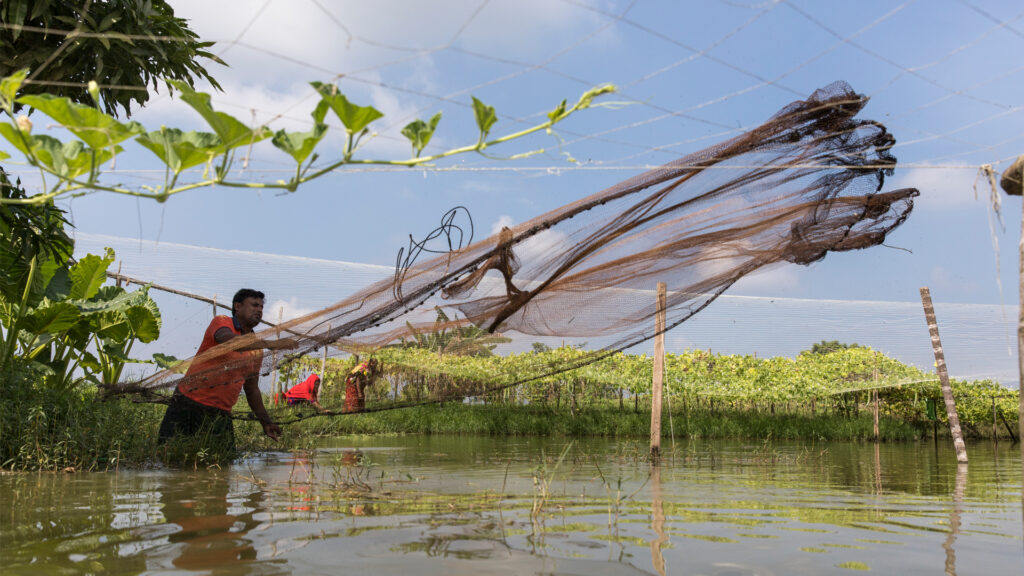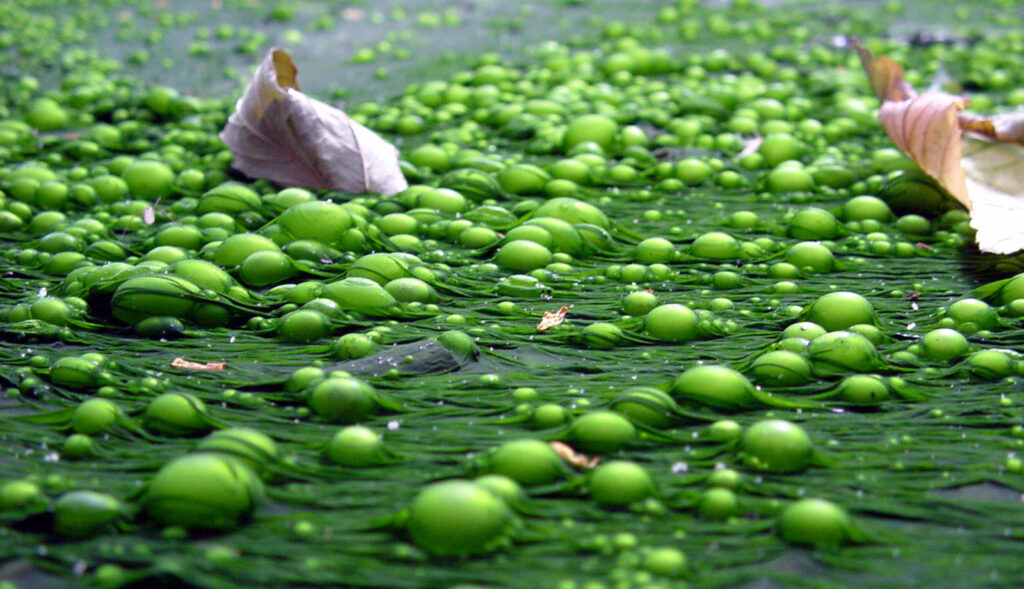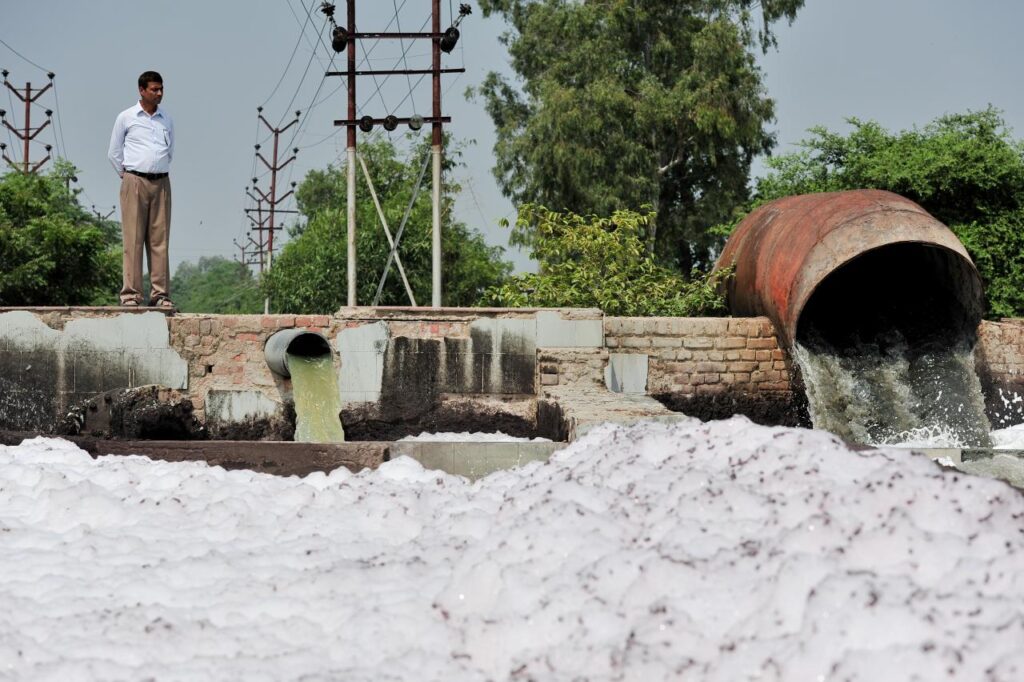By Sean Mowbray, Mongabay
Scientists say that nitrogen pollution from agriculture and human waste could dramatically worsen clean water scarcity by 2050, according to a groundbreaking study recently published in the journal Nature Communications.
Researchers from Germany and the Netherlands modeled the impact of nitrogen pollution on water quality in more than 10,000 river basins planetwide. They found that as of 2010, there were just 984 river basins thought to be facing water scarcity based on “classic” water quantity estimates. But factoring in the impact of nitrogen pollution saw this figure jump to more than 2,500 basins that year.

Projecting forward to 2050, a worst-case pollution scenario found more than 3,000 river subbasins facing clean water scarcity, covering an additional 40 million square kilometers (around 15.4 million square miles) of basin area and potentially impacting 3 billion more people than their estimate of 2.9 billion people impacted by water quantity scarcity alone in 2010, the researchers stated.
Using this pollution-inclusive scenario, the study identified nitrogen pollution hotspots in China, India, Europe, North America and Africa.
The wide divergence between estimates is attributable to the fact that water scarcity assessments often only track the quantity of water coming down a river, says Benjamin Bodirsky, study co-author and senior scientist at the Potsdam Institute for Climate Impact Research. “What we added to this (analysis) is clean water scarcity. We were looking at which rivers have sufficient water quality to support biodiversity and ecosystem functioning.”
“Water pollution is becoming a very important cause of water scarcity,” notes Mengru Wang, lead author of the paper and a research associate at Wageningen University in the Netherlands. “You may have enough water, but if the quality is poor, then it cannot be safely used by humans or nature.”
Implications for planetary health
Nitrogen is released into the environment via human waste and by fertilizers spread on agricultural lands. A boom in synthetic nitrogen fertilizer production (now heavily sourced from fossil fuels) began with the invention of the Haber-Bosch process in 1913. Though that industrial process phenomenally boosted crop yields, feeding much of the world, it also allowed for a massive influx of nitrogen into waterways, leading to toxic algae blooms, hypoxia, fish kills and fishery collapse and human health impacts.
The disruption of Earth’s natural nitrogen cycle by human activity is counted among the nine planetary boundaries — limits that when transgressed threaten the “safe operating space of the Earth system.” The nitrogen planetary boundary was transgressed in 1970. Since then, activation has increased 160%, though notable differences have been observed between countries and watersheds depending on intensity of fertilizer use.

In the future, nitrogen hotspot river basins identified by the study could be at much greater risk of eutrophication with potential consequences for the environment, economies and possibly even human health. Bodirsky states that such high levels of pollution could lower fish harvests, reduce water quality to the point that it is not suitable for recreation and “destabilize ecosystems more generally.”
Jan Semenza, a public health expert at Sweden’s Umeå University, who was not involved in the current study, calls the findings “pretty bad news. … It’s not just water quantity, it’s also quality that’s plummeting, and it’s devastating for not only human health but also for planetary health in general,” he says.
Nitrogen pollution “has huge ramifications for all kinds of ecosystems that we depend on. We need those ecosystem services, as do a lot of other living organisms,” Semenza says.
The research team stated that a multitude of other “newly emerging pollutants” — including microplastics, heavy metals, pathogens and pharmaceuticals — emitted into waterways via sources such as human wastewater will likely cause “severe water degradation in the future.” It is estimated that in some regions of the world, up to 80% of wastewater flows into the environment untreated, causing concern for fragile freshwater ecosystems and human health.
The team did not assess the impact of other pollutants on water quality but plans to conduct similar modeling to identify more future hotspots. “How those pollutants will change the (geographic) picture of water scarcity, we don’t know,” Wang says, adding that future research is needed to delve deeper into pollution’s potential economic and health implications at regional and local scales. “Maybe the hotspots will shift from one region to another, and it (also) depends on how these pollutants are used and treated.”
Emergent pollutants — counting in the hundreds of thousands of synthetic chemicals humanity has added to the environment — are included within the novel entities planetary boundary, which scientists found to be transgressed in 2022.
Climate change — another planetary boundary — is also expected to impact both water quantity and quality. Last year, researchers reviewed 965 case studies and found that river water quality “generally deteriorates” because of intensifying droughts, heat waves, rainstorms, floods and other long-term climate change consequences. Climate change can increase pollution impacts, with high temperatures worsening algal blooms and extreme droughts raising water pollutant concentrations.

“Because of the seasonality of water availability, and (climate) impacts … water quality has become more important,” says Katrina Charles, professor of environmental health risks and chair of the Oxford Water Network, who was not involved in the recent pollution study. “If you have a longer period of low flow in a river, you’ve got more concentration of those pollutants and a longer time that people are being exposed to them.”
Semenza says he worries that public health will worsen globally due to the interplay between climate change and pollution. “We do know that there is an increased risk for waterborne disease outbreaks under water scarcity scenarios,” he says, as this can limit access to clean water for other purposes such as hygiene. Both long-term drought and extreme precipitation events can lead to waterborne disease epidemics.
“It is concerning to see the convergence of pollution, climate change and inequities and how they exacerbate the situation when it comes to clean water resources for humans, but also for other living beings and nature in general,” Semenza says.
The paper offers some overarching solutions, noting that alongside measures to address water quantity, more action is needed to prevent and clean up pollution. Specifically, the authors suggest better management and more efficient use of fertilizers and improvements to wastewater treatment facilities. In many parts of the developing world, such facilities are nonexistent or lag behind the technology found in the industrialized world.
“Another very important opportunity is to look into how we can reduce the consumption of meat to improve the nutrient use efficiency of agriculture in general,” adds Wang.
Concerningly, the authors’ most optimistic modeling scenario, which assumes the realization of a raft of positive global changes (including sustainable socioeconomic development, ambitious nitrogen reduction policies, low-meat dietary shifts, improved sewage connection and treatment, sustainable water withdrawal and climate mitigation), still sees clean water scarcity hotpots in regions such as China, India and Europe.
“I think this paper is adding to this message that we need to take this issue more seriously,” says Charles, “and really think about the impact that pollution is having on our water systems and how we can protect them for ecosystem health and for our own health.”
Mongabay is a U.S.-based nonprofit conservation and environmental science news platform. This piece was originally published at https://news.mongabay.com/2024/03/pollution-poses-big-risks-to-global-clean-water-supplies-study-shows/.
Sign up for The Invading Sea newsletter by visiting here. If you are interested in submitting an opinion piece to The Invading Sea, email Editor Nathan Crabbe at ncrabbe@fau.edu.



